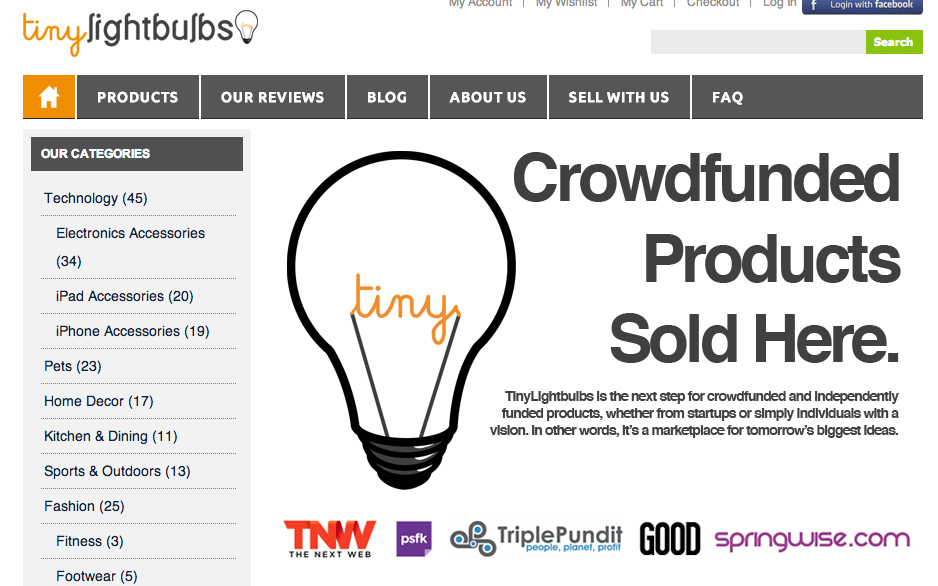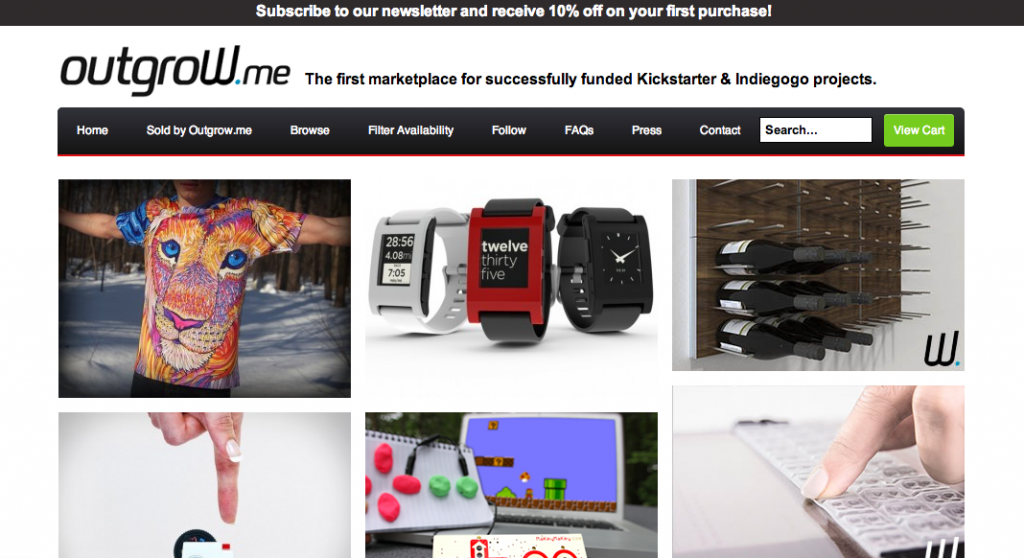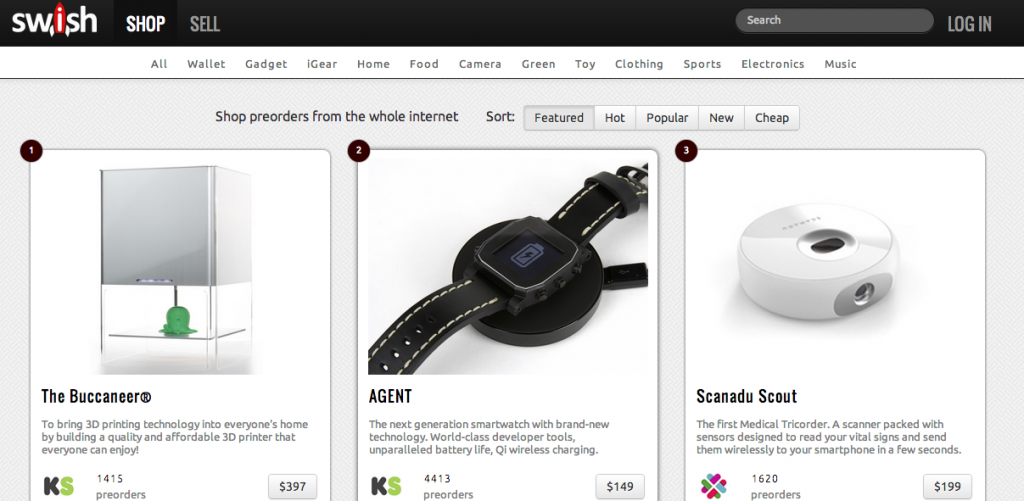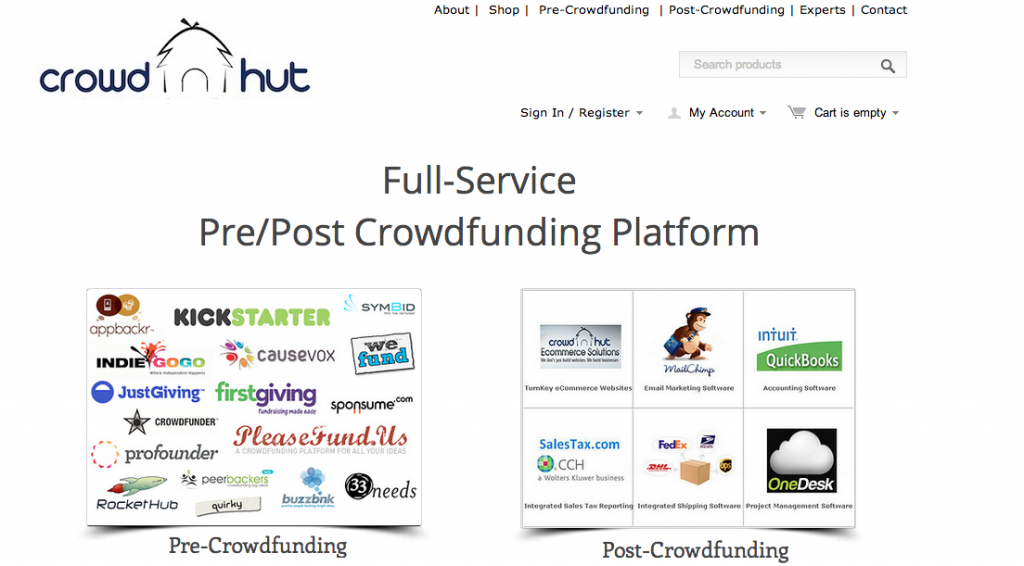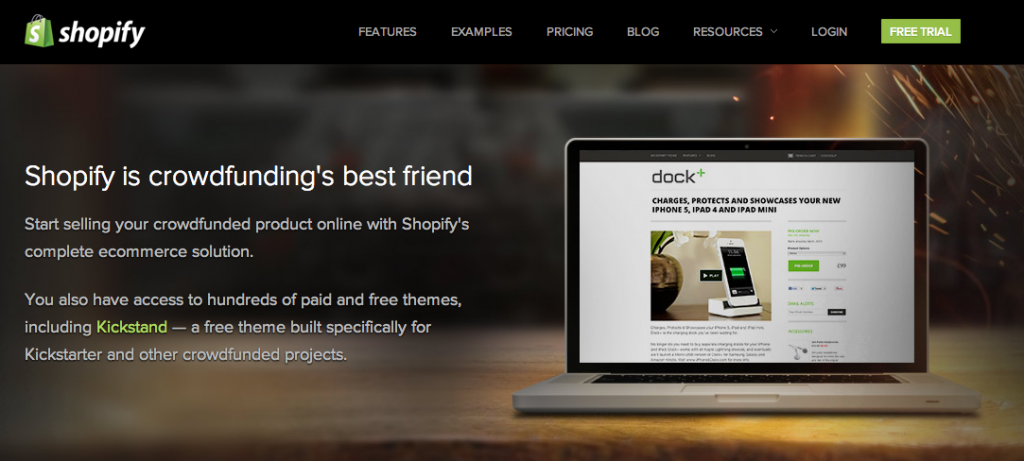Please see the bottom of this article for my recommendation regarding these services.
1. TinyLightbulbs
“TinyLightbulbs actively participates in the crowdfunding process by using a portion of monthly revenue to back projects on sites like Kickstarter, Indiegogo, RocketHub, and Fundable.” The website offers crowdfunded and independently made products for sale. As a seller, you can list your product, which you may have crowdfunded on Kickstarter, Indiegogo, RocketHub, or another website.
Fees: “You agree to give TinyLightbulbs 13% of the earnings on the moneys transferred through us. We agree to publish your product at the price you enter in this form, therefore once your product is sold we will collect 100% of the price on TinyLightbulbs.com, and we will fund you 87% of what the customer paid to receive your product, once you verify that the product has been shipped to the customer.”
2. Outgrow.me
Branded as “The first marketplace for successfully funded Kickstarter and Indiegogo Projects,” Outgrow.me is another marketplace for crowdfunded projects. The company also offers “fulfillment services, white-labeled customer service, and retail opportunities through our domestic and international distribution networks.”
Fees: “There is no cost associated with a project being featured on Outgrow.me. Just click HERE to give us your information, and we’ll get things set up!”
3. Crowd Outlet
Launched in April of 2013, is a new marketplace for crowdfunded products. The website offers your buyers some great features like wish-lists and giftcards. Also, it has a 30-day return policy on all products purchased through the website.
Fees: “Crowd Outlet will retain a 30% commission on each sale.”
4. Swish (no longer active)
Swish labels itself as a preorder marketplace for products. Buyers can sort through “new,” “cheap,” and “popular” products. The company also offers order fulfillment services. “We aggregate the best pre-orders from across the internet. Most of the products you see are being sold by other websites. If you see something you like, you can click through and purchase on that website.”
Fees: “Listing: 2% of sales through Swish. Note that this only applies for direct sellers — Swish receives nothing from products listed on other sites.
Payments: We use Stripe, and pass on their fee. It’s 2.9% + $0.30 per transaction.
Postage: At cost — USPS at Commercial Base rates. $1.69 for parcels up to 3oz. We have negotiated bulk rates with FedEx, contact us for details.
Fulfillment: $2/package. This includes handling, warehouse fees and packing materials.”
5. CrowdHut
CrowdHut serves as a pre and post funding platform and recently celebrated its one year anniversary. “We offer our turn-key solutions pre-and post-crowdfunding through a one-time and tiered, monthly subscription model that includes all aspects of campaign and product preparation and management.” The company also offers crowdfunding consulting in the form of “CrowdHut Experts.”
Fees: “For our eCommerce store, we charge 30% per transaction and that does not include the shipping costs but does cover all transaction fees and taxes if any.”
6. Shopify
Shopify, the well-known e-commerce platform has decided to get into the post-crowdfunded products marketplace. WIth their latest advertisement, they highlight the benefits of using their e-commerce platform to simplify product ordering after your campaign has finished on Kickstsarter or Indiegogo.
Fees: $14-179 per month + Free post-Kickstarter website theme.
My Recommendation
As you can see, the fees and benefits greatly vary between providers. Depending on your price point, the size of your audience, and the amount of money you have raised, one platform may be better than the other, or none of these platforms may be a good solution for you.
Be sure to conduct a thorough cost benefit analysis. It’s difficult to direct your marketing, promotion, and sales efforts towards multiple e-commerce stores (unless you have a team), so at the end of the day, I’d recommend focusing on driving traffic to one store, be that one of platforms above, or your own website.
However, if after thorough research, you believe that a platform has a thriving customer base who are enthusiastic about your type of project, then it may make more sense to list your product on their website for the same reason major providers will list their product with certain retailers despite a wholesale price drop. In the end, the store has enough eyeballs and foot traffic to make up for the wholesale pricing because of the large volume of sales. Think of the commission or fees the website takes as a type of advertising or promotion cost.
If a marketplace you are interested in does not have a strong community, then I would seriously break out the spreadsheets and ask yourself if it’s worth your time and energy promoting your product on someone else’s e-commerce store.
For websites that have low fees, this may not seem like a big issue, but some websites like Crowd Outlet take a whopping 30% commission on your sales. For that type of percentage, it may make more sense to invest in building out an e-commerce website, or using a free wordpress site with free e-commerce plugins.
On the other hand, if a site that has tons of traffic, a great community, and takes 30% commission, you may be able to make up for your lost profit on the volume of sales obtained.
Did you find this article to be helpful? Consider Liking us on Facebook!


